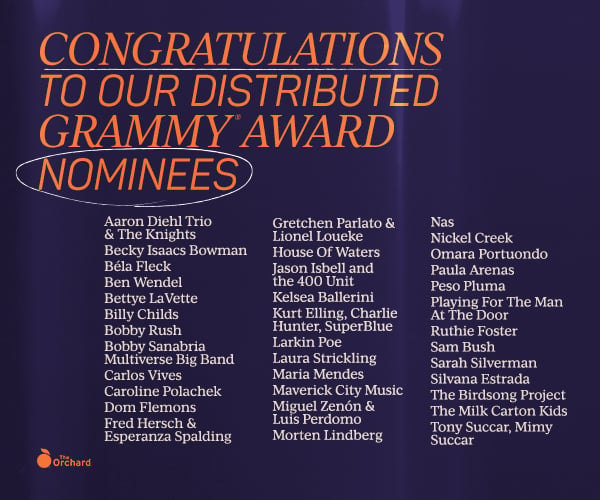If you’ve kept half an eye on music industry shenanigans this year, you’ll know that Spotify isn’t exactly popular with songwriters.
The Swedish streaming service has joined forces with Amazon, Google, and Sirius XM/Pandora to appeal a statutory pay rise for composers and their publishers from on-demand streaming services in the United States. That pay rise could be significant, increasing the royalty checks coming out of these platforms, and others like them, by at least 44% between 2018 and 2022.
Whether or not instruments of the U.S. government should be setting the royalty rate for songwriters on streaming services is, at this point, a moot argument. The fact is, they do, via the Copyright Royalty Board, whose three judges ruled last year that composers and their publishers would, by 2022, be paid via the higher outcome of two formulas: either (i) as 15.1% of a streaming service’s total revenues; or (ii) as 26.2% of a streaming service’s “Total Content Costs” — i.e. the total amount of money a platform like Spotify pays to record labels and artists, plus songwriters and publishers.
Spotify, Amazon, Google, and SiriusXM/Pandora are now appealing this ruling because, to cut a long story short, they argue it could unfairly advantage Universal Music Group, Sony Music Group, and Warner Music Group — who all own both major record companies and major music publishers.
Apple stands alone in refusing to appeal the CRB’s judgement.
Spotify et al’s appeal, filed last month, argues that, to avoid giving the major music companies too much power, a ‘cap’ should have been introduced by the CRB Judges, which would ensure that no method of payout to publishers could ever exceed the equivalent of $0.80 per paying subscriber, each month, of each service.
According to Spotify’s appeal filing, two of the three CRB judges ultimately decided that “the record labels already can put the services out of business if they choose to do so”, and so dismissed this ‘cap’ as unnecessary.
The document claims that the CRB judges wrongly assumed that the record companies would, in reaction to favorable rates being set for songwriters and publishers, “voluntarily lower their rates to accommodate the increased mechanical royalties, to ‘ensure the continued survival and growth of the music streaming industry’.”
This seems scarcely believable – as in, either the CRB judges never actually assumed this, or it’s scarcely believable they ever did. (Record companies lowering their payments for the good of the holistic music landscape is hardly a prevalent story throughout history. It’s a pretty good joke, though.)

Apple proposed a much simpler way of rewarding songwriters during the CRB’s decision-making process: a $0.00091 payout for writers and/or their publishers for every single stream (over 30 seconds) hosted by an on-demand audio streaming service.
“Apple doesn’t think it makes sense for [songwriters] to be dependent on the business success of the services that use their music. They should get a consistent, predictable, and transparent per-play rate, and then it is up to the services to run the most innovative and efficient businesses possible for which they can recoup the upside.”
Dale Cendali, Kirkland & Ellis on behalf of Apple, speaking in 2017
Testifying on behalf of Apple on March 8th, 2017, Dale Cendali of legal giant Kirkland & Ellis told the CRB that “the current rate structure is overly complicated and lacks transparency because royalties depend on the amount of revenue a service generates … this means you can have one company pay one rate for a stream, and another company pays a different rate … and because of that, songwriters may receive different compensation even though it is the same song being streamed.”
She added: “Apple doesn’t think it makes sense for [songwriters] to be dependent on the business success of the services that use their music. They should get a consistent, predictable, and transparent per-play rate, and then it is up to the services to run the most innovative and efficient businesses possible for which they can recoup the upside.”
Concluded Cendali: “This single per play rate for every stream of the song makes sense. Everyone pays the same amount. Everyone receives the amount. It is simple, transparent, predictable, and fair.”

Interestingly, this rejection came after a period of intense lobbying from Apple’s competitors. Both Spotify and Google, to name two, were very keen to throw out any notion of a per-play payment system, after music publishers initially suggested that a per-stream rate of $0.0015 for mechanical royalties (slightly higher than Apple’s proposed rate) should be considered by the CRB.
In a written testimony to the CRB dated February 2017, Zahavah Levine — VP of Partnerships at Google Play, including its then-flagship music service, Google Play Music — said: “Google Play Music’s primary objective is to achieve standalone, sustainable profitability.” In the same submission, Google’s hand-picked expert economist, Gregory Leonard, revealed that “despite a continuously increasing user base and subscription revenue, Google Play Music has never been profitable”.
“Despite a continuously increasing user base and subscription revenue, Google Play Music has never been profitable.”
Google expert economist, Gregory Leonard, speaking in 2017
In an earlier submission to the CRB, dated October 2016, Levine slammed calls for a per-play royalty structure — which, she said, combined with an increase in rates for copyright owners, would “guarantee that only those very few companies who could both afford and would be willing to incur tremendous losses could continue to offer streaming music services.”
Spotify was arguably even more forthright in its comments on the matter. Paul Vogel, Head of Global Financial Planning and Analysis at Spotify, admitted in October 2016 that “lower royalty rates are critical to Spotify’s future”.
He added: “Lower royalty rates would allow Spotify to spend more on revenue growth drivers, which would result in more absolute revenue for everyone as well as for the company … With lower royalty rates, we can develop a better product, and if we can develop a better product, more people will be willing to pay, the market will expand, and the total value to the entire ecosystem will grow.”
In other words, we should pay writers and artists less money per stream … in order to pay writers and artists more money overall. (This, it goes without saying, is a controversial logical leap.)

This was, and remains, a major talking point for Spotify. Apple wanted all services — including those with a free tier that naturally generates less money than a paying subscriber tier — to be forced to pay $0.00091 to songwriters for every play on their services. McCarthy was hinting that such a hard-and-fast rule could cause serious economic problems for a business like Spotify’s.
McCarthy further argued that a per-stream rate would “disincentivize Spotify and other providers from encouraging listening” and would in fact “incentivize services to decrease engagement” — i.e., platforms like Spotify might actually try to limit the number of streams being played on their own platforms each month in order to keep costs down.
“Lower royalty rates are critical to Spotify’s future and promote revenue not just for the company but also for copyright owners.”
Paul Vogel, Spotify, speaking in 2016
Google’s Levine agreed with this suggestion. She wrote in October 2016: “A per-play rate would punish services with higher, unpredictable royalties and create perverse incentives for music services to discourage use of [their] service.”
In the end, the CRB categorically rejected Apple’s proposal. Its judges ruled that Apple’s suggested rate — based on the historical amount it paid to songwriters from iTunes downloads — wasn’t a fair calculation, adding that: “Apple’s proposal fails to reflect the variable WTP [Willingness to Pay] in the market, rendering it a less efficient upstream royalty rate.”
Instead, songwriters now await the CRB’s response to an appeal which has added complication to a tense stand-off, while driving a wedge between Spotify and a key creative community in the modern music business.






